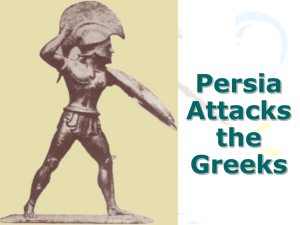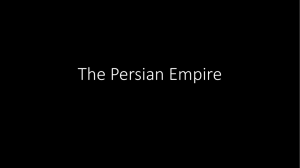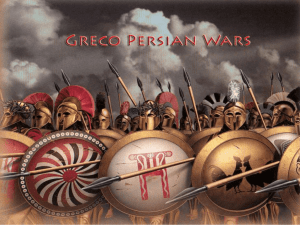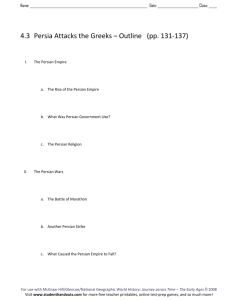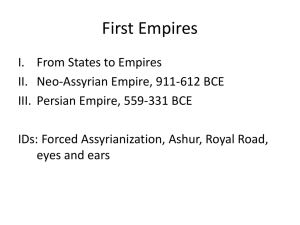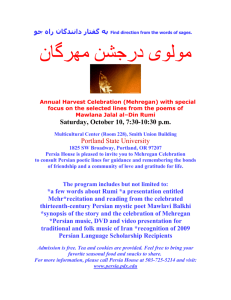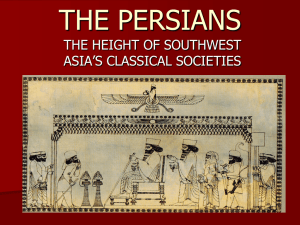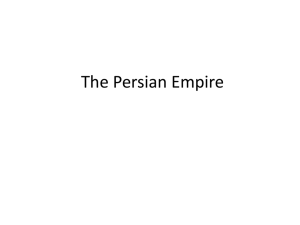P ERSIANS MEET THE…
advertisement
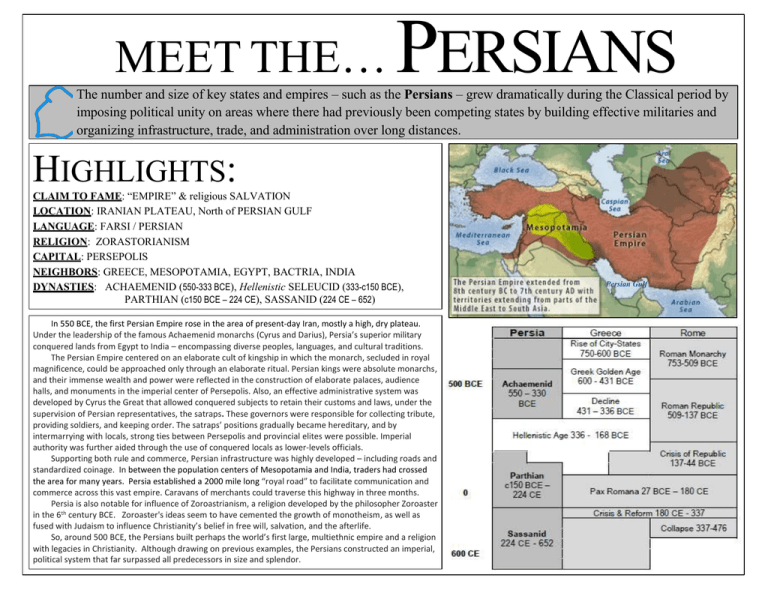
MEET THE… PERSIANS The number and size of key states and empires – such as the Persians – grew dramatically during the Classical period by imposing political unity on areas where there had previously been competing states by building effective militaries and organizing infrastructure, trade, and administration over long distances. HIGHLIGHTS: CLAIM TO FAME: “EMPIRE” & religious SALVATION LOCATION: IRANIAN PLATEAU, North of PERSIAN GULF LANGUAGE: FARSI / PERSIAN RELIGION: ZORASTORIANISM CAPITAL: PERSEPOLIS NEIGHBORS: GREECE, MESOPOTAMIA, EGYPT, BACTRIA, INDIA DYNASTIES: ACHAEMENID (550-333 BCE), Hellenistic SELEUCID (333-c150 BCE), PARTHIAN (c150 BCE – 224 CE), SASSANID (224 CE – 652) In 550 BCE, the first Persian Empire rose in the area of present-day Iran, mostly a high, dry plateau. Under the leadership of the famous Achaemenid monarchs (Cyrus and Darius), Persia’s superior military conquered lands from Egypt to India – encompassing diverse peoples, languages, and cultural traditions. The Persian Empire centered on an elaborate cult of kingship in which the monarch, secluded in royal magnificence, could be approached only through an elaborate ritual. Persian kings were absolute monarchs, and their immense wealth and power were reflected in the construction of elaborate palaces, audience halls, and monuments in the imperial center of Persepolis. Also, an effective administrative system was developed by Cyrus the Great that allowed conquered subjects to retain their customs and laws, under the supervision of Persian representatives, the satraps. These governors were responsible for collecting tribute, providing soldiers, and keeping order. The satraps’ positions gradually became hereditary, and by intermarrying with locals, strong ties between Persepolis and provincial elites were possible. Imperial authority was further aided through the use of conquered locals as lower-levels officials. Supporting both rule and commerce, Persian infrastructure was highly developed – including roads and standardized coinage. In between the population centers of Mesopotamia and India, traders had crossed the area for many years. Persia established a 2000 mile long “royal road” to facilitate communication and commerce across this vast empire. Caravans of merchants could traverse this highway in three months. Persia is also notable for influence of Zoroastrianism, a religion developed by the philosopher Zoroaster in the 6th century BCE. Zoroaster's ideas seem to have cemented the growth of monotheism, as well as fused with Judaism to influence Christianity’s belief in free will, salvation, and the afterlife. So, around 500 BCE, the Persians built perhaps the world’s first large, multiethnic empire and a religion with legacies in Christianity. Although drawing on previous examples, the Persians constructed an imperial, political system that far surpassed all predecessors in size and splendor. Persian Gulf
